Via Francigena Part 8 route map |
Great St Bernard Pass ~ Etroubles ~ Aosta ~ Châtillon ~ Verrès ~ Pont-Saint-Martin ~ Ivrea |
Distance: 117km (1,174/1,900km) |
S l o w time: 6 days |
Italian Alps | Green and pleasant Aosta Valley | The Micro-Mediterranean | Castles | Ghost villages
Who’s ready for a bit of bella Italia?
We certainly are – Italy is a country we have serious long term love for, and was a big reason we decided to walk the Via Francigena in the first place. Now we had been doing this giant walk to Rome for over two months it felt high time to leave Switzerland and get into the mother country.
So quick route overview: we will be cutting through the Aosta Valley first, before moving on to Piedmont, Lombardy, Emilia-Romagna, Tuscany, Liguria, Lazio and -finally, stay with us- Rome. We’ve never explored the North of Italy before, so we couldn’t wait to get going – get us down those Alps!
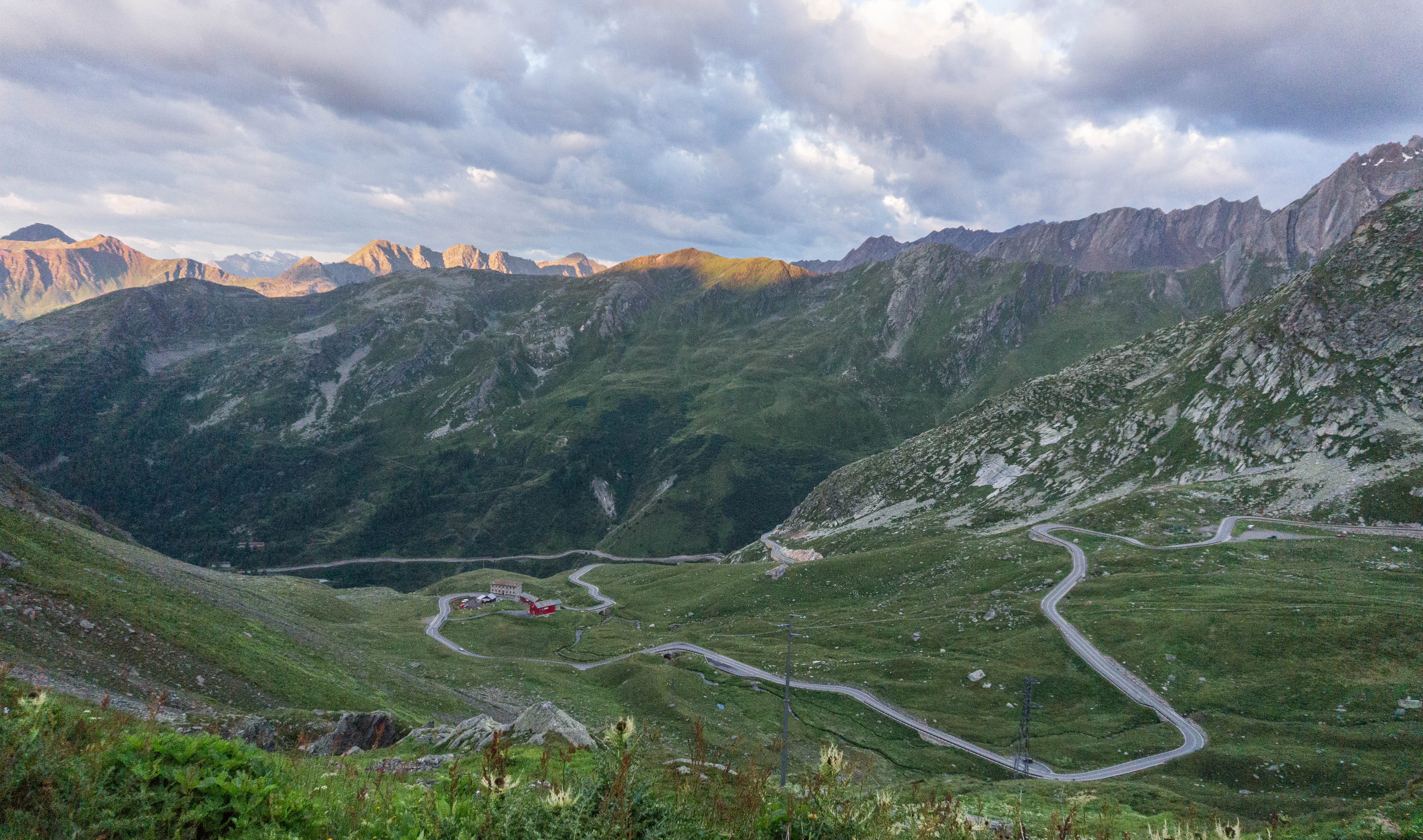
So in the last blog, we had made it to the top of the Great St Bernard Pass, a huge moment for us. We were elated: we had got halfway, up the highest point, and to the end of another section. This meant a reluctant goodbye to Switzerland and another strange European land border – woo! We still can’t get over them: this one was just a stroll around a little lake. We followed the path, caught sight of a sign saying Italie and had a cheap cappuccino to celebrate. Then, hitching up our rucksacks we set off down the other side. Benvenuti!
We found the steepest part of the descent on the Italian side came immediately after leaving the Pass – what a happy episode that was. (Ahem – anybody else worse at going downhill than up?) But then the path levelled off into one absolutely stellar walk, with huge unfolding views of the valley and the Alps – Italian style.
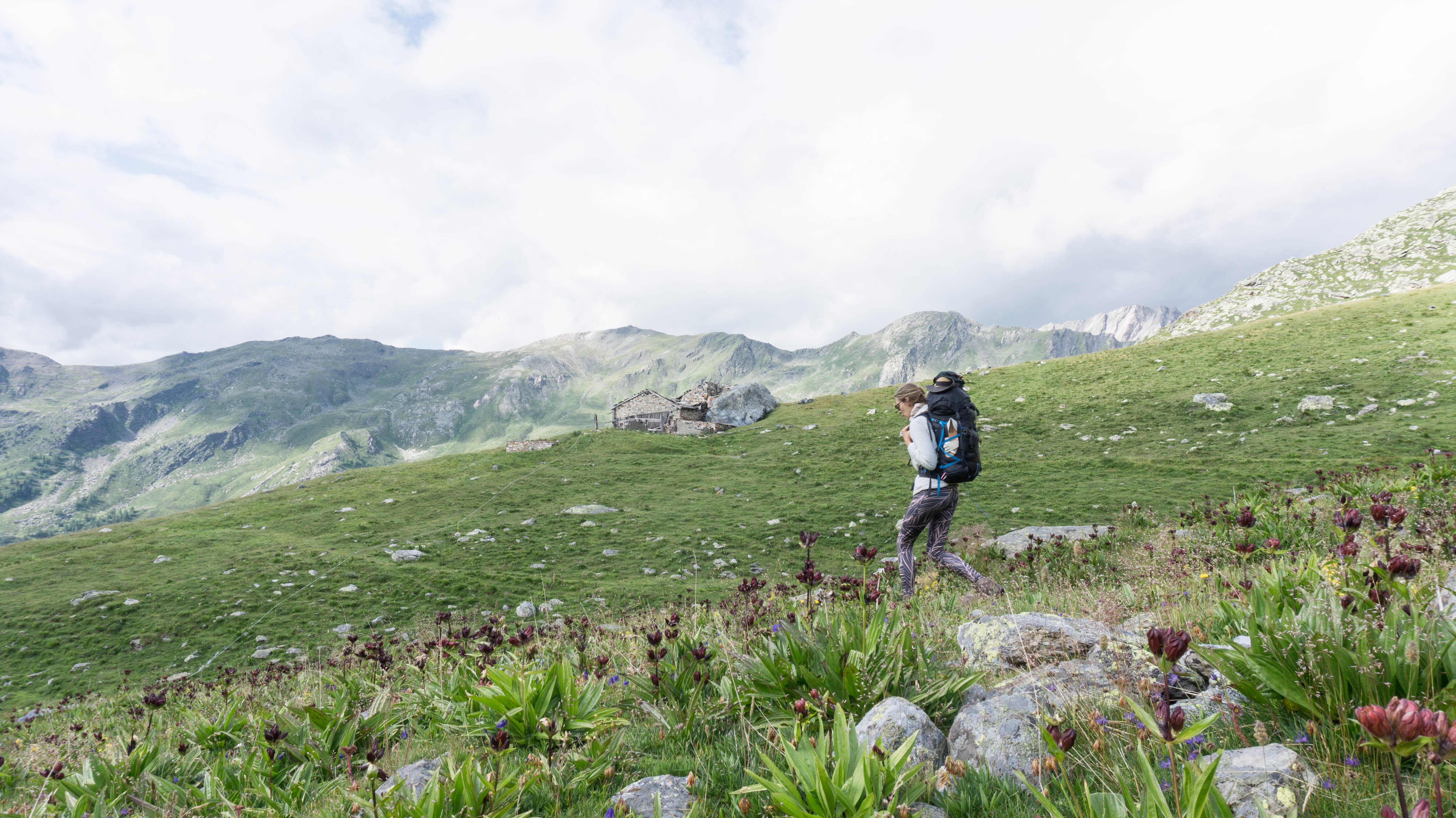
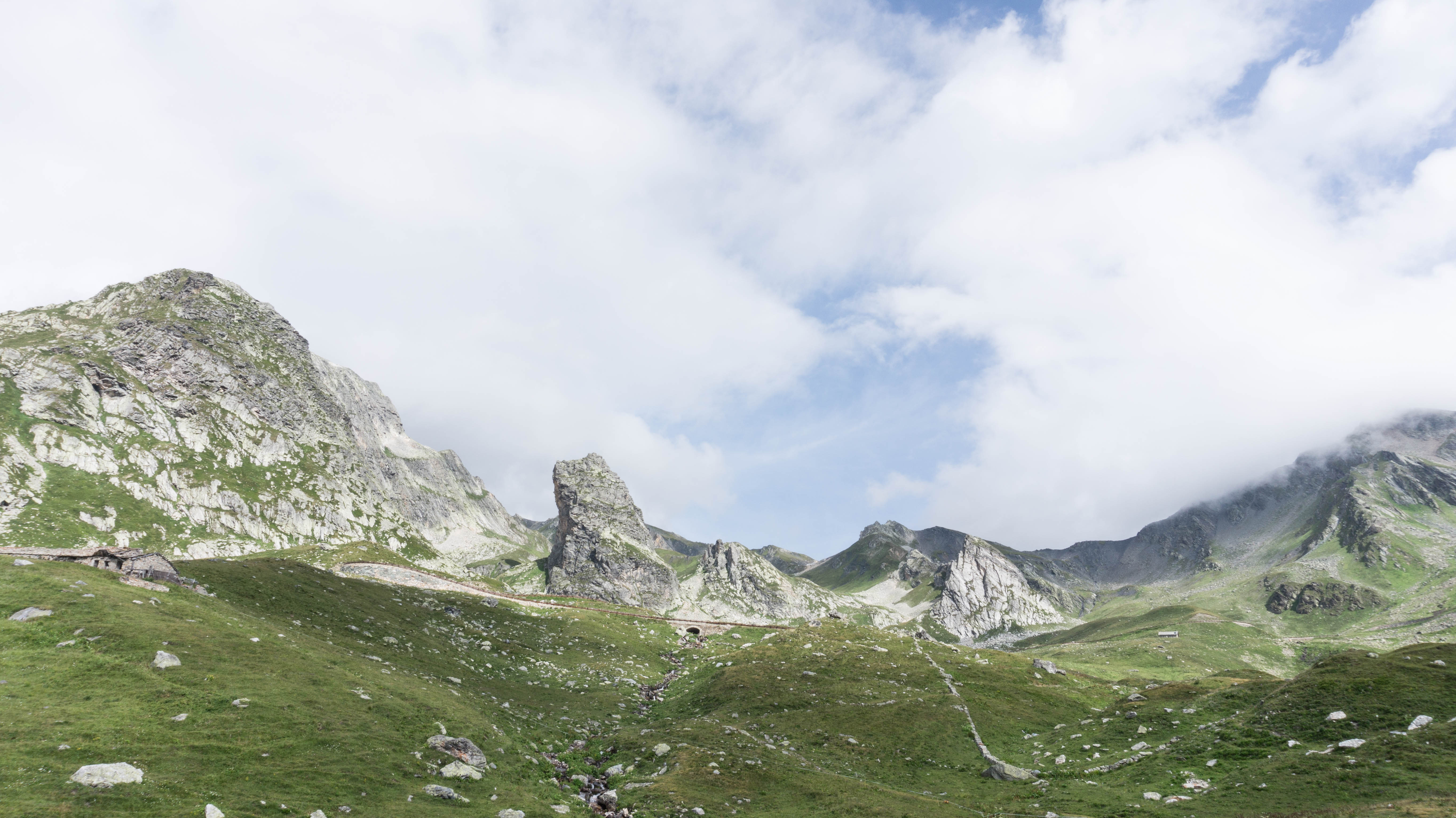
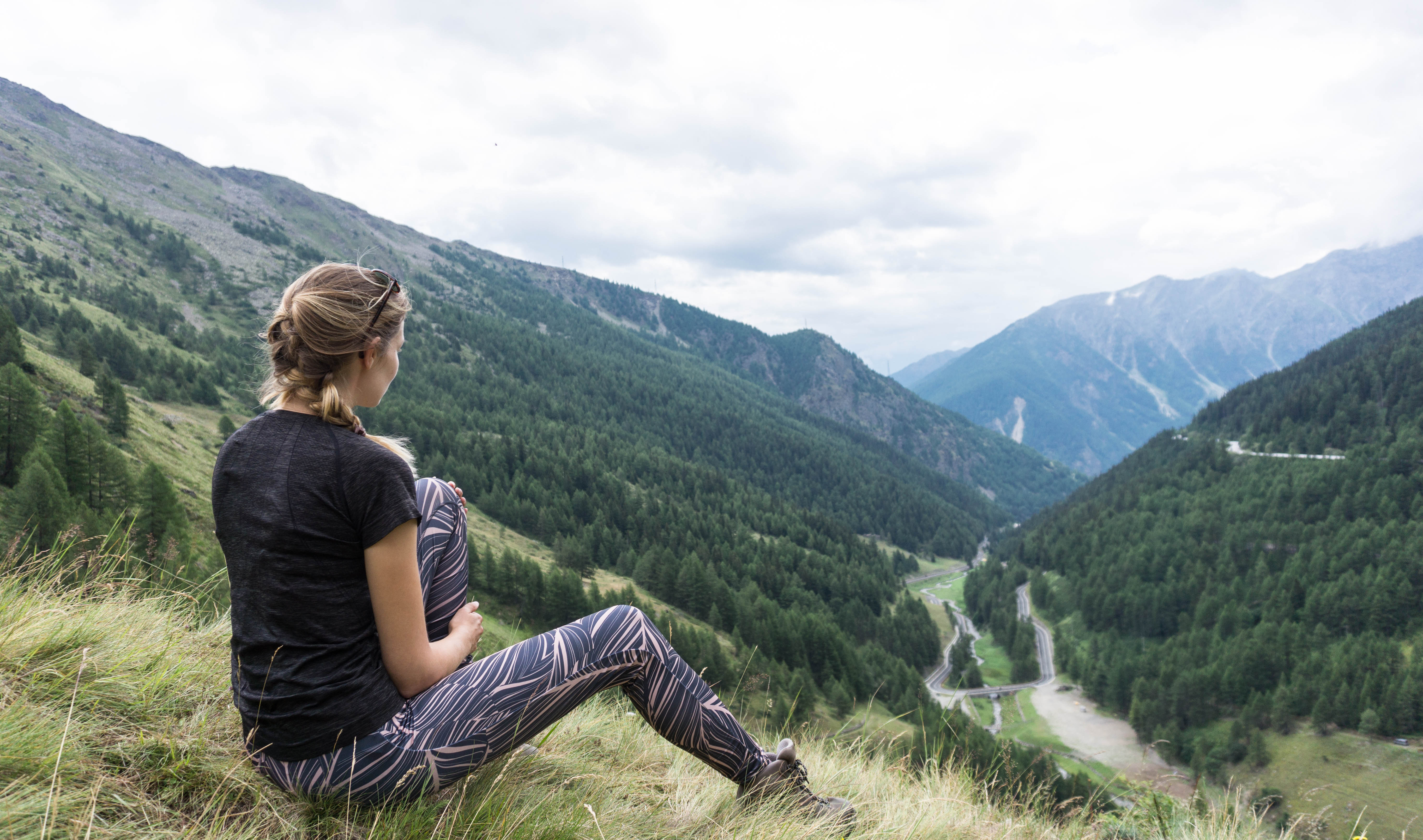
From then on, it’s a beautiful and fascinating couple of days’ walking all the way down. We meandered along cliff edges and mountain streams to the first villages of Italy, Saint-Rhémy-en-Bosses and Etroubles. With both Italian and French influence, they mostly seem to just belong to the mountains; hardy, old and interesting. They both had an explosion of Via Francigena signs and paraphernalia, including an entire building dedicated to it in Etroubles. It served no clear purpose, but we thought it quite impressive anyway.
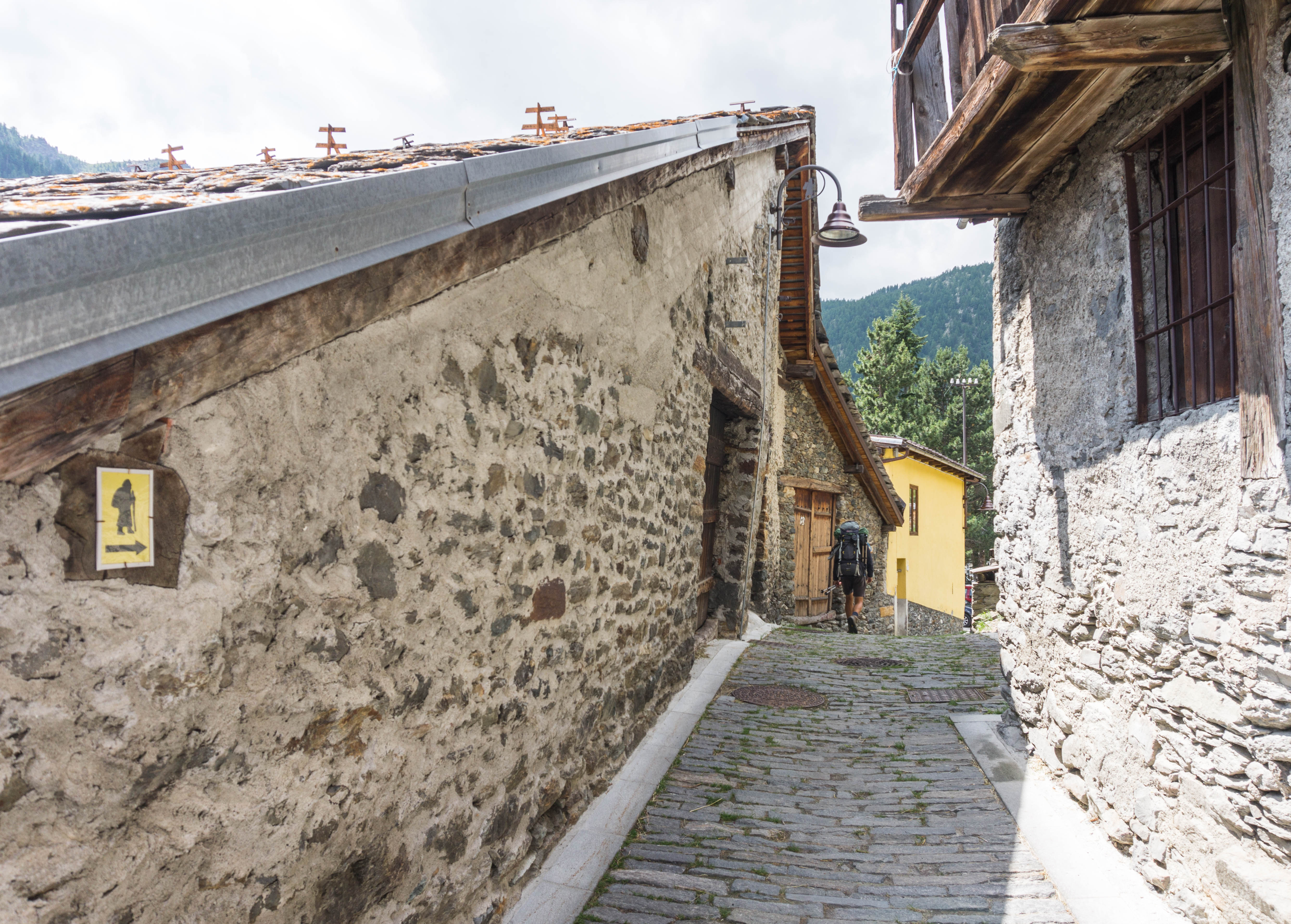
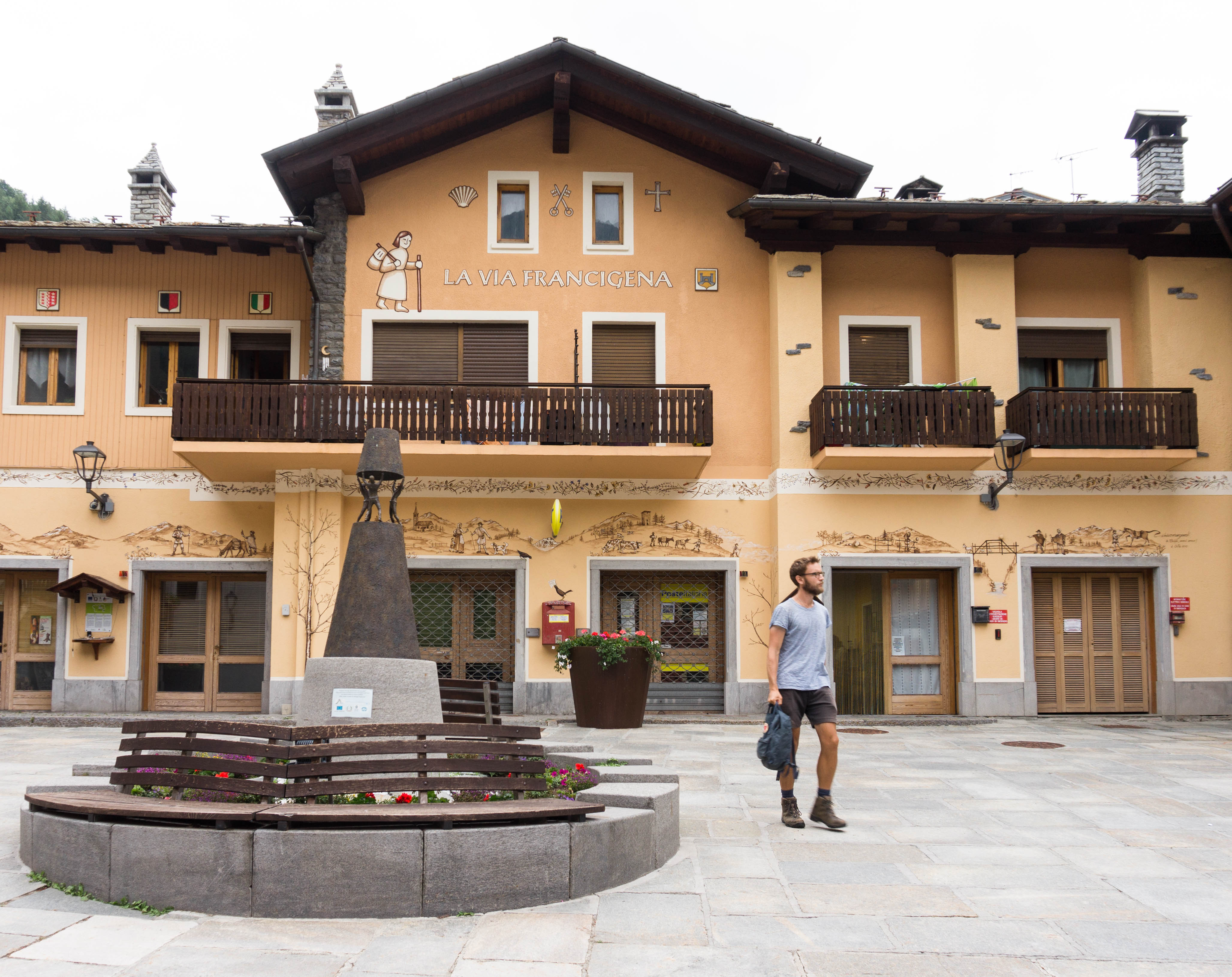
What a fun adventure it is coming down from the Pass. We think that if you want to explore the Italian Alps, walk some not-too-difficult downhill trails with still great mountain views, then this is the section for you.
And once we had barrelled down to the bottom, we were frankly delighted to find the elegant city of Aosta, complete with a backdrop of mountains (still snowy in July) and narrow, cobbled streets. It’s an ancient place and an important mark on the Via Francigena, as Sigeric himself (father of the Via Francigena) stopped there. We wandered happily around Aosta’s old gate and Roman ruins, scoops of pistachio and caffe in hand – the best gelato flavour combination IOHO.
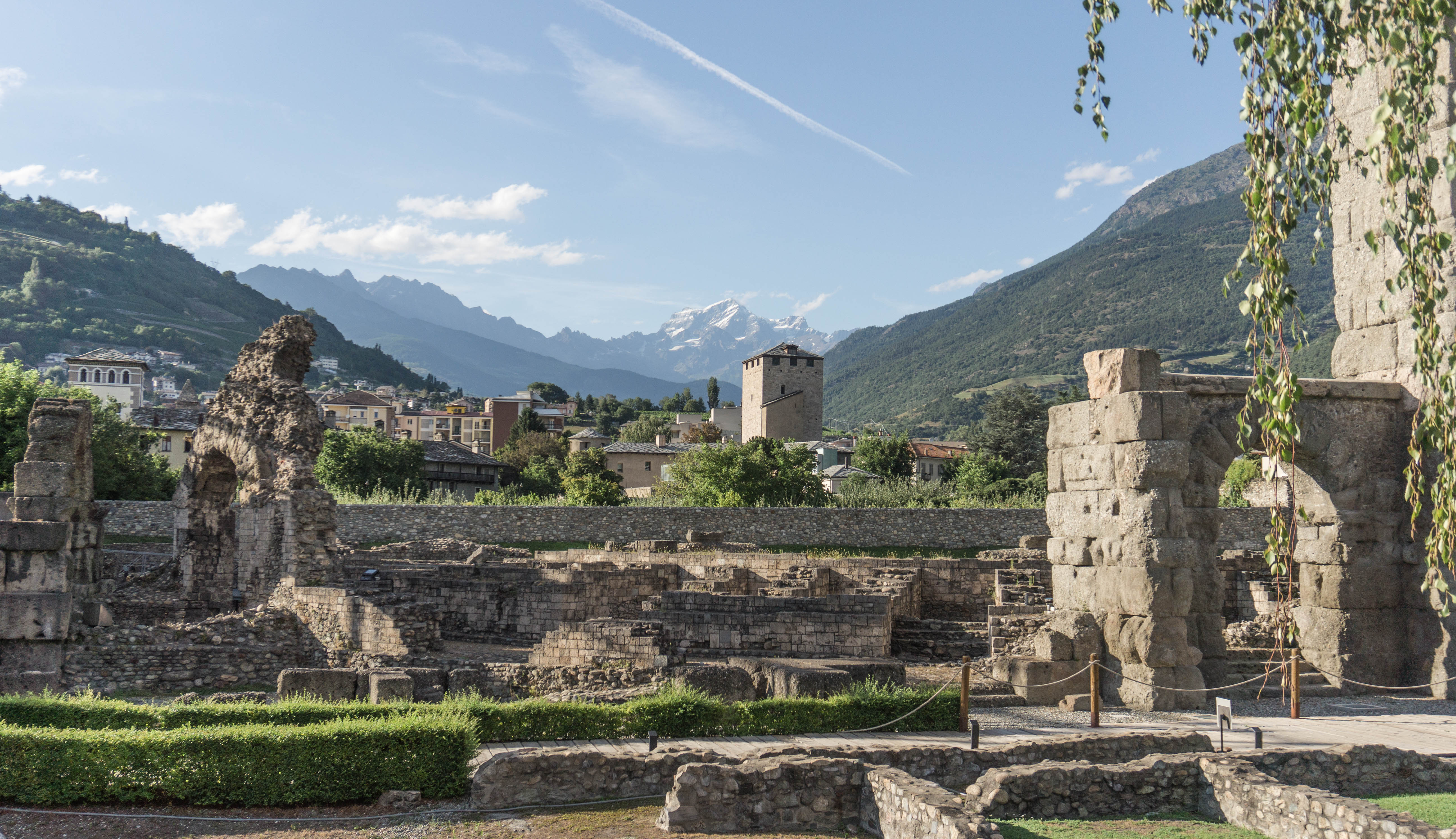
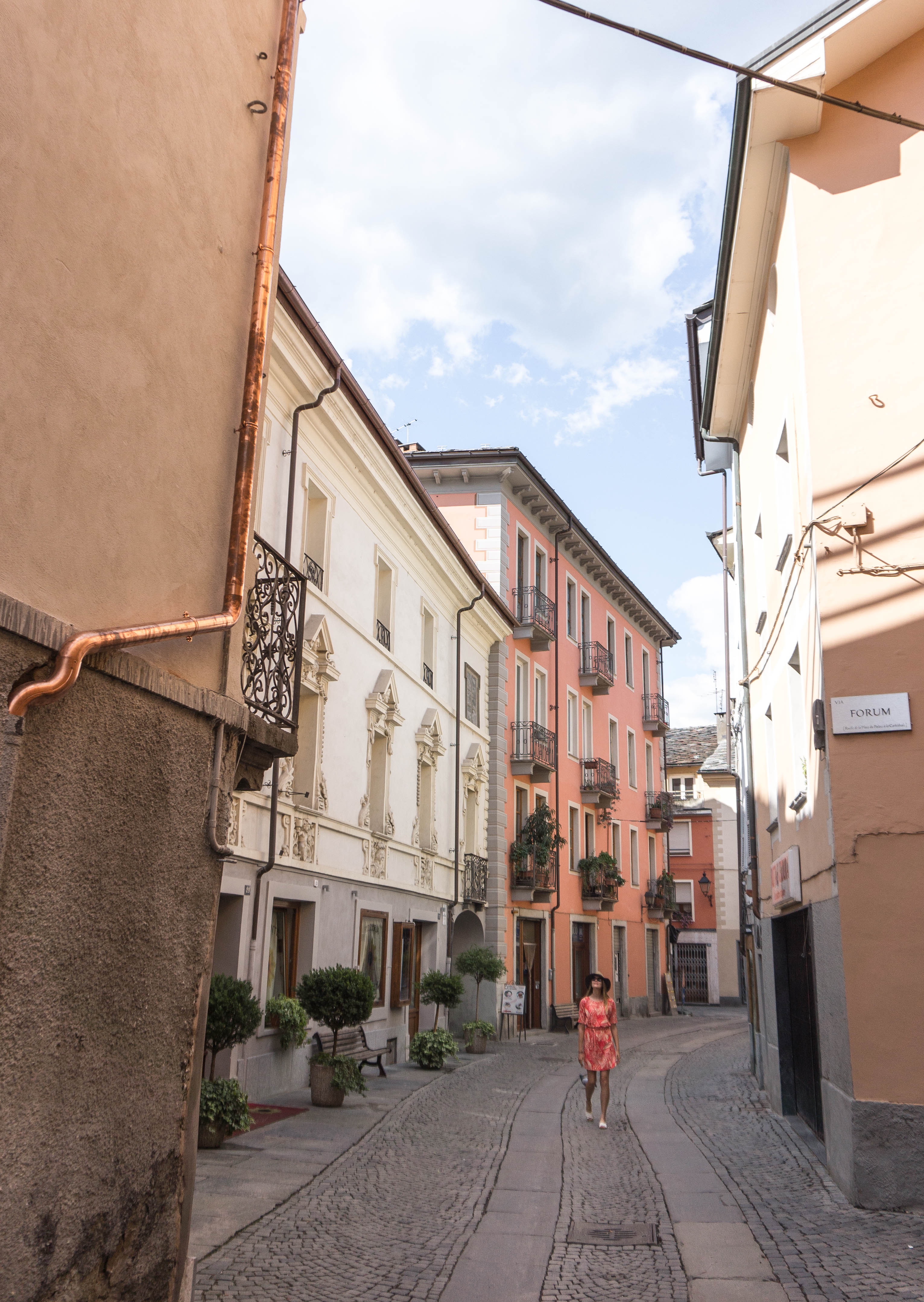
After Aosta, the path then continues through the first main section of the Via Francigena in Italy, the Aosta Valley. And it was immediately cool: we were suddenly skirting the steep cliff sides, the mountains now green and tree-covered. But it was dry and sandy, the path rocky underfoot. We were reminded of those hot Italian days that belong far further south. Who knew there was a mini-Mediterranean right at the foot of the Alps?
Out of nowhere too appeared funny little information boards, telling us about the long-gone people of the Aosta Valley. We were soon walking through their abandoned villages, the houses grown over with ivy and slowly crumbling into the valley. We spent all day peering round corners and ducking into doorways, utterly enthralled; it was like walking through some forgotten Victorian boomtown – and as usual nobody was there but us.
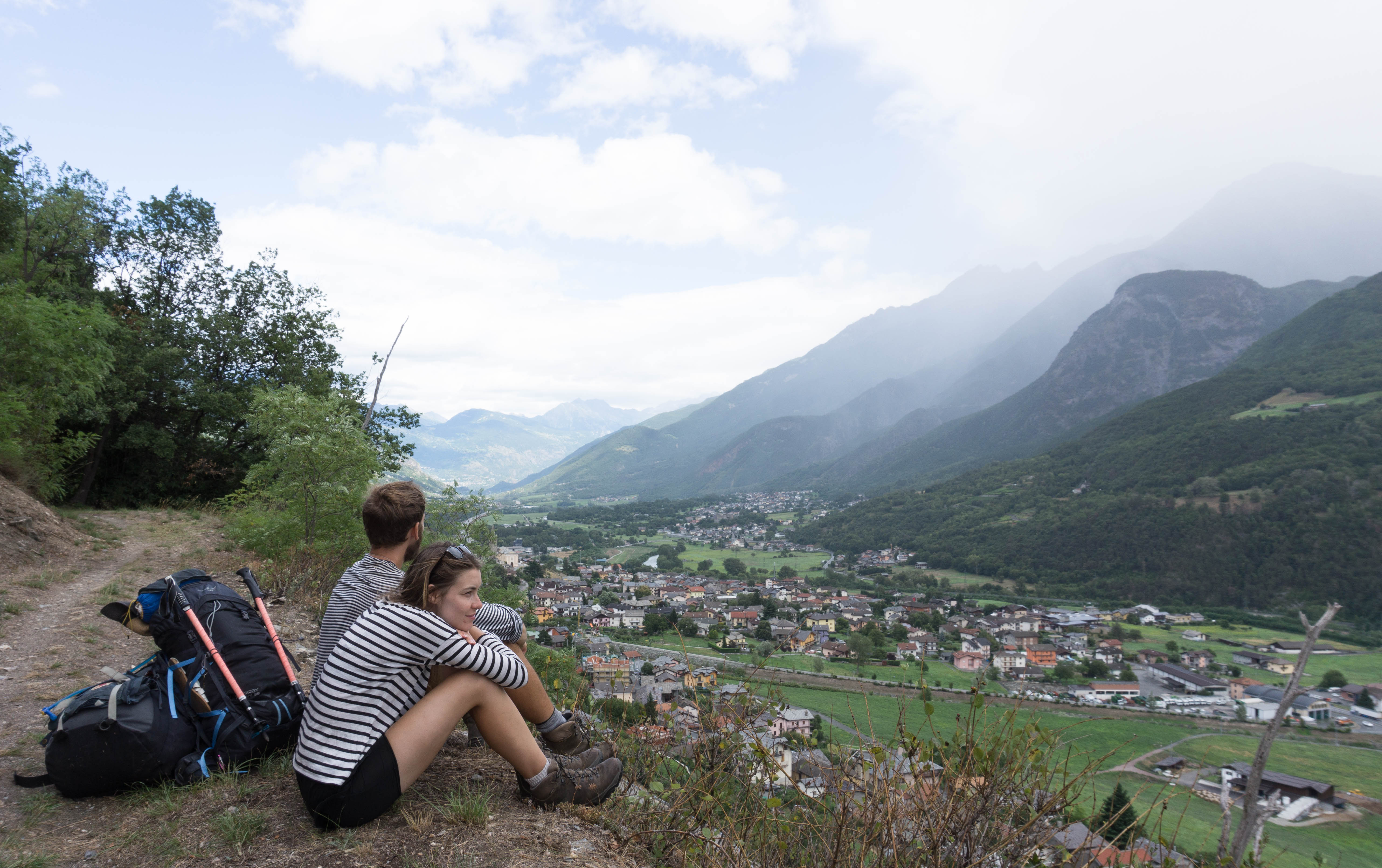
And as if the Aosta Valley isn’t interesting enough, older ruins are dotted around too. 11th century fortifications and castles continue to cling to the hills, still watching over the traffic trundling through below. Little walking paths hive off the VF to reach them, and we couldn’t help but go down a few; they led to some utterly beautiful remains, covered in pericoloso signs and with giant panoramas of the whole Aosta Valley. We had a favourite: Cly Castle, for just VIEWS.
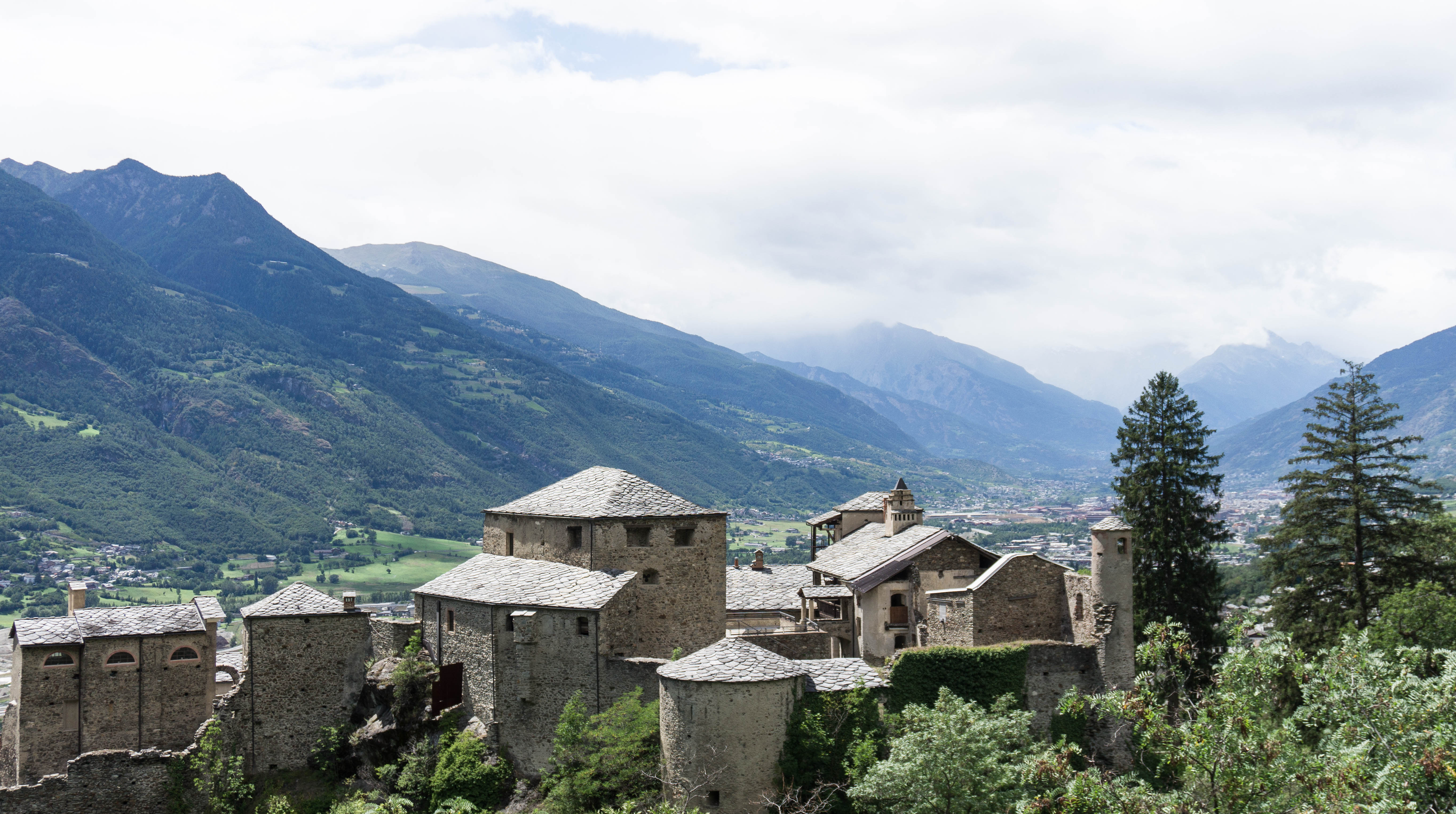
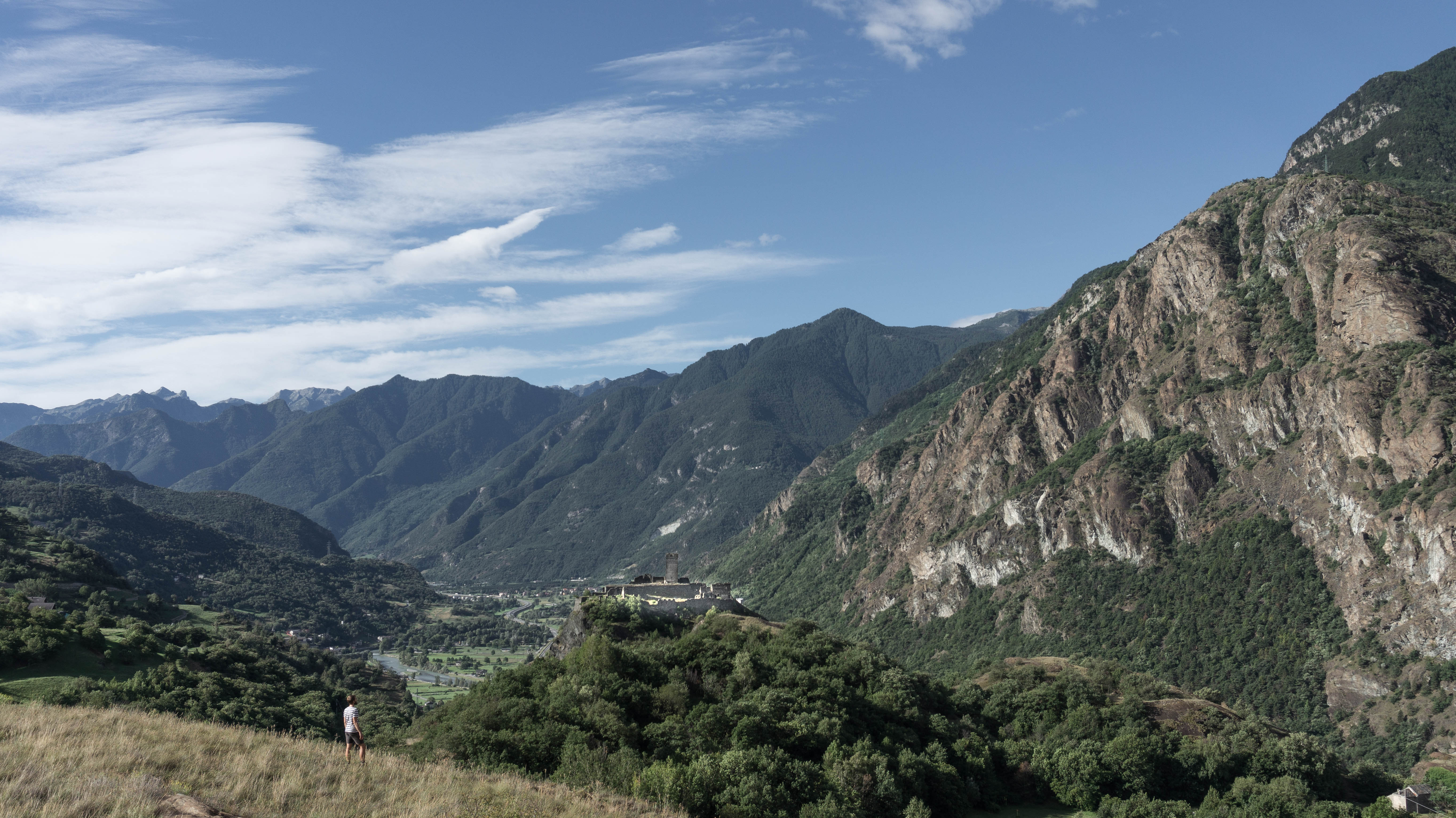
We descended each day to stay in Châtillon, Verrès & Pont-Saint-Martin, all ‘modern-but-with-old-bits’ valley towns, built round bridges and crashing mountain rivers. They were comfy to stay in, with town clocks that gently struck the hour and friendly cafes that opened late into the night and early in the morning. Oh and also: more castles!
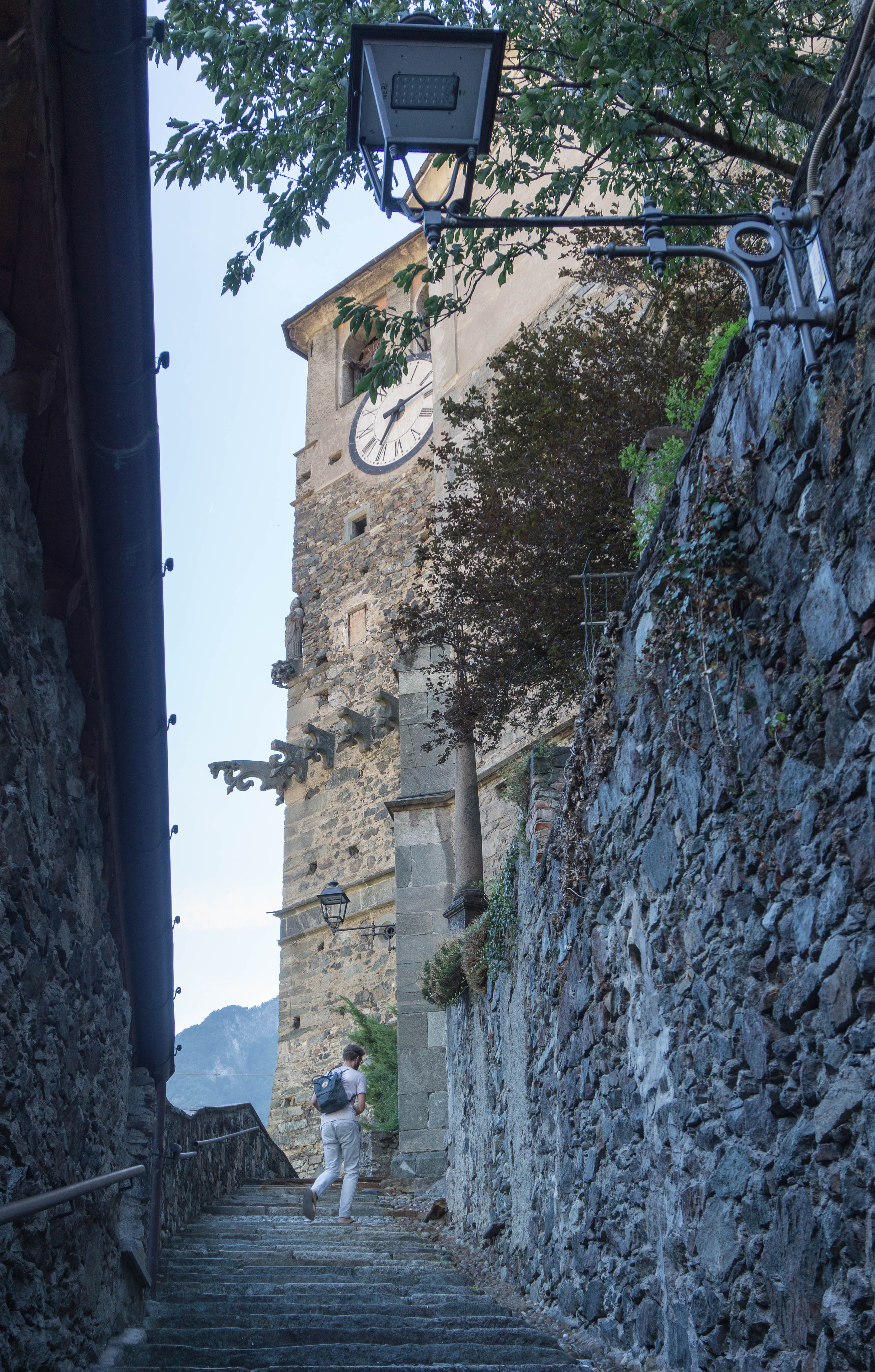
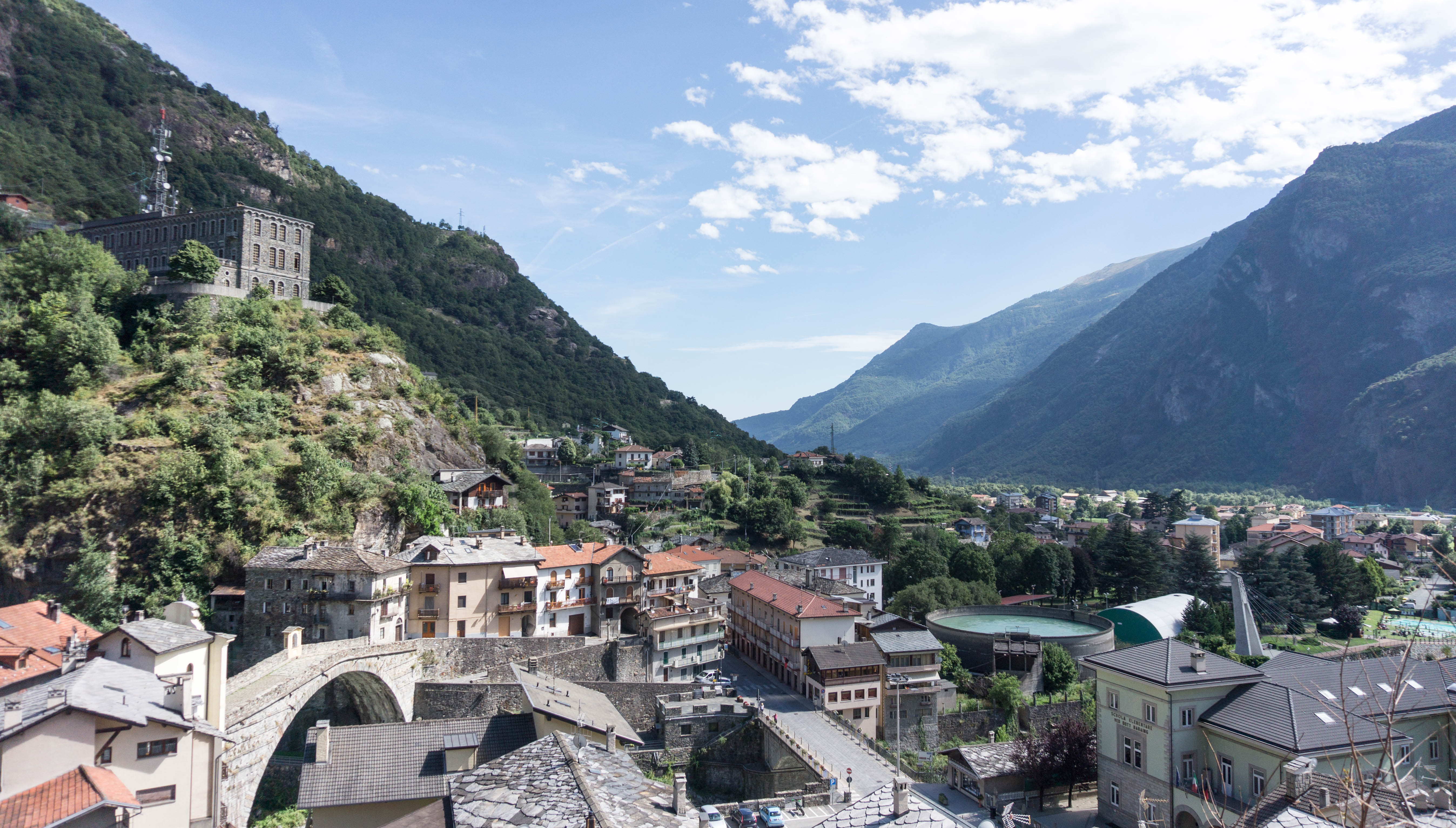
It was such a great week’s worth of walking, and we reckon this section has some of the most interesting -and least talked about- cultural and scenic parts of the Via Francigena so far. Recommended!
When we finally got to Ivrea, the last of the valley towns, we felt a change was indeed coming. A pretty place, it’s known best for its own castle and the quite crazy yearly Battle of the Oranges (where real oranges are thrown with real force at real people).
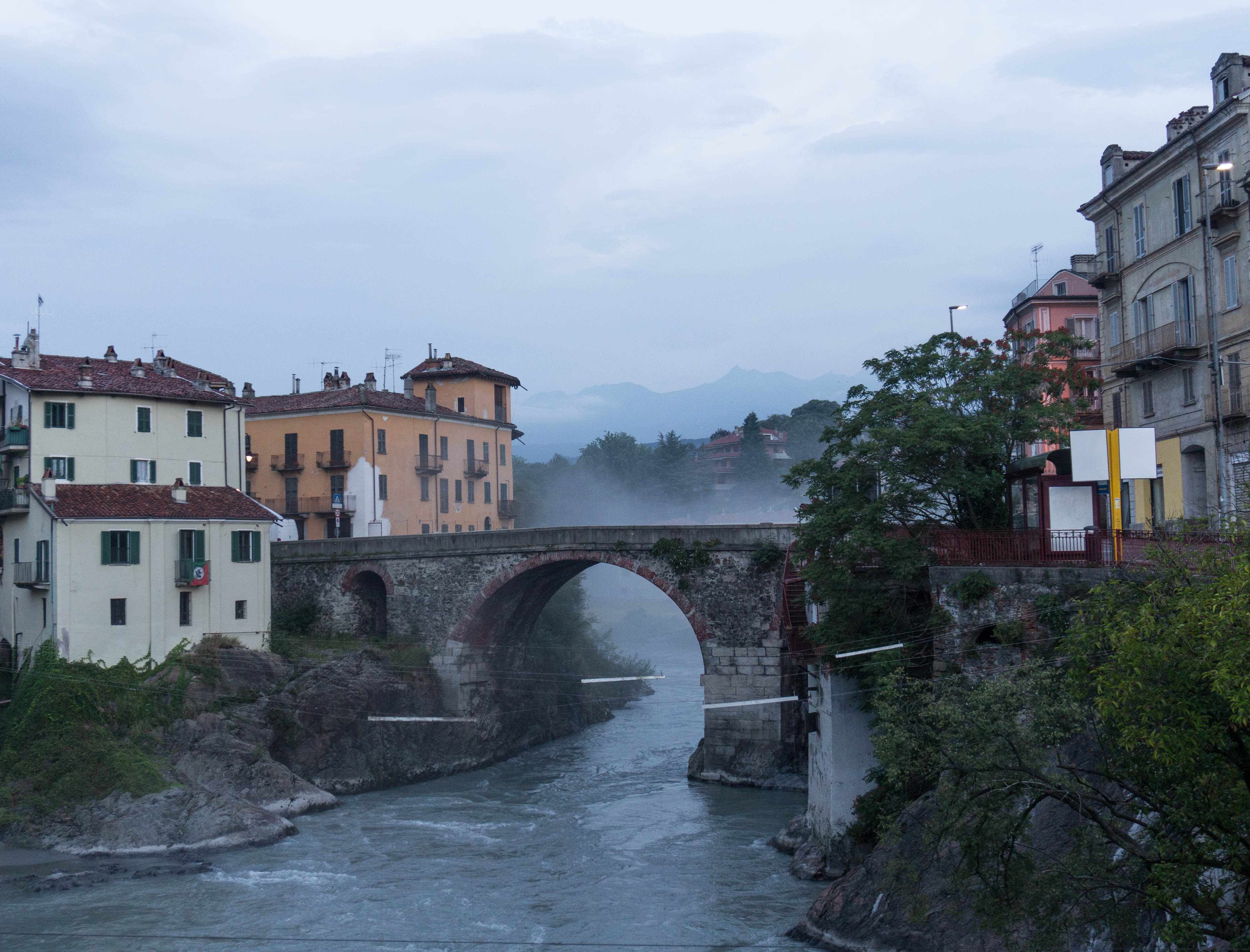
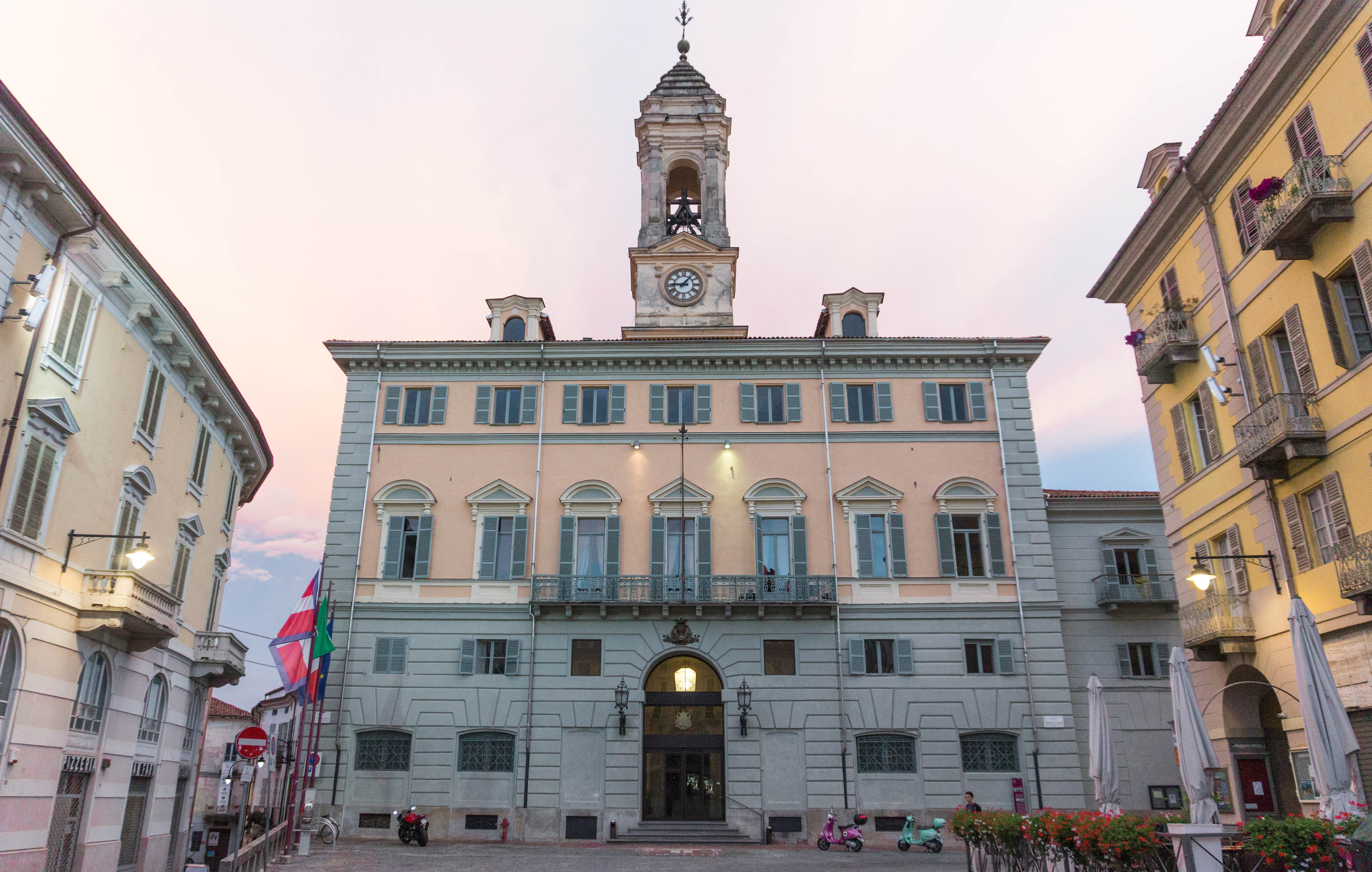
And after having seen only mountains for weeks, we noticed Ivrea was surrounded instead by a weird oblong hill, completely flat on top. Beyond it, there was nothing but blue sky. This meant only one thing: the mountains and the Aosta Valley had ended.
We were sad to see it: although there had been a bit of dread about the Alps, and the lumpy up and downs along the mountains had indeed been exhausting, we had grown to love walking with these towering, spellbinding companions. Ivrea signified the closing of this particular awesome chapter of our Via Francigena – yes, we were sad.
There was another sign of change as well: new pilgrims were arriving! There had been a steady trickle of (mostly Italian) pilgrims since the Pass, all doing bits of the path. It’s funny meeting these other walkers, everyone wants to know who you are, where you started from – all the questions. When we tell them we’ve walked from Canterbury they seem surprised and mighty impressed. But after the shouts of ‘brava! BRAVA!’ they always ask us the same thing:
‘But why are you doing this, walking all the way from Canterbury?’
It’s a good question. But we have a simple answer:
‘For adventure.’
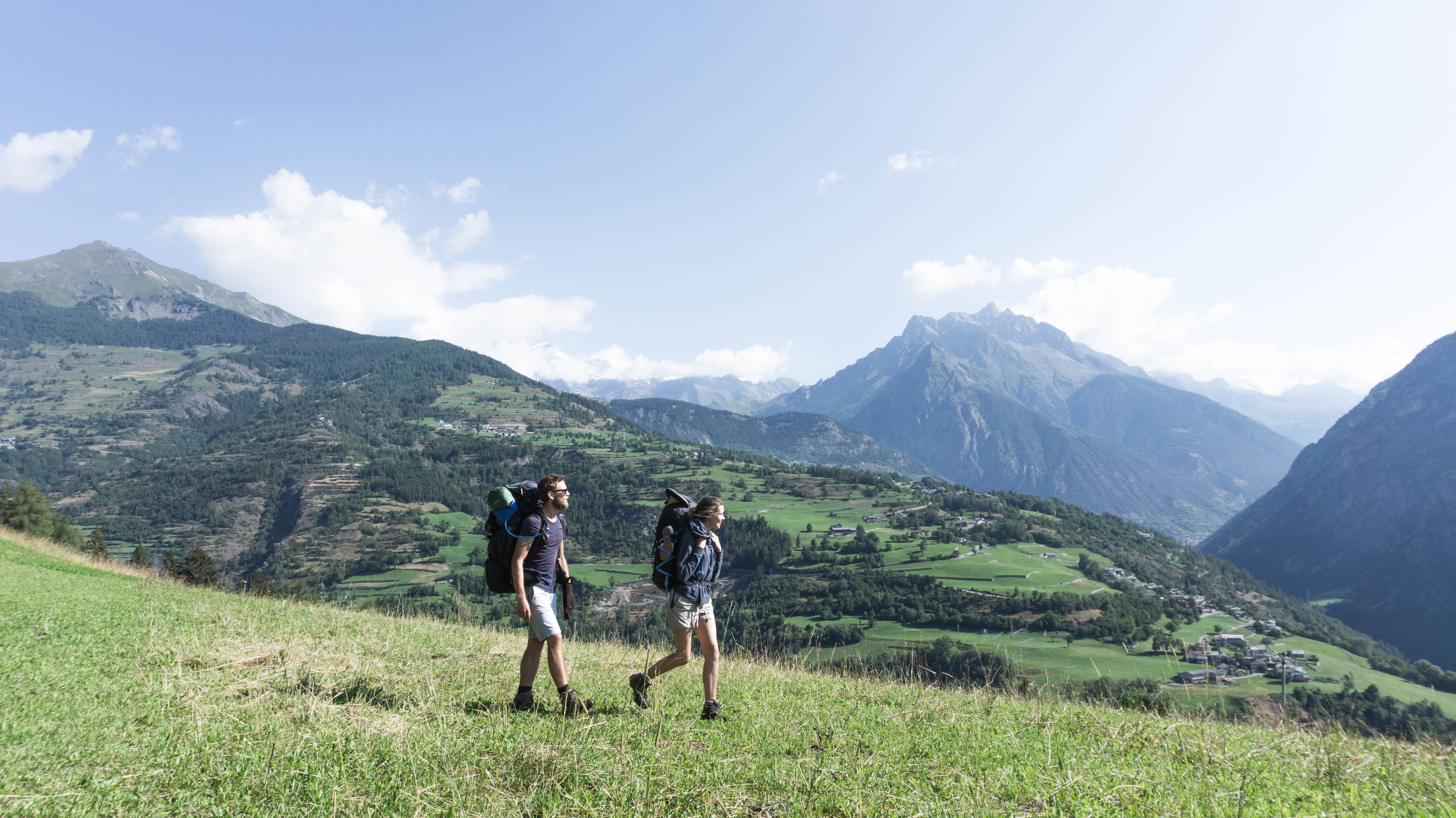
Keep up with our adventure along the Via Francigena! We are heading through the giant Vercelli paddy fields, across the River Po, and to the Apennines and Tuscany beyond…

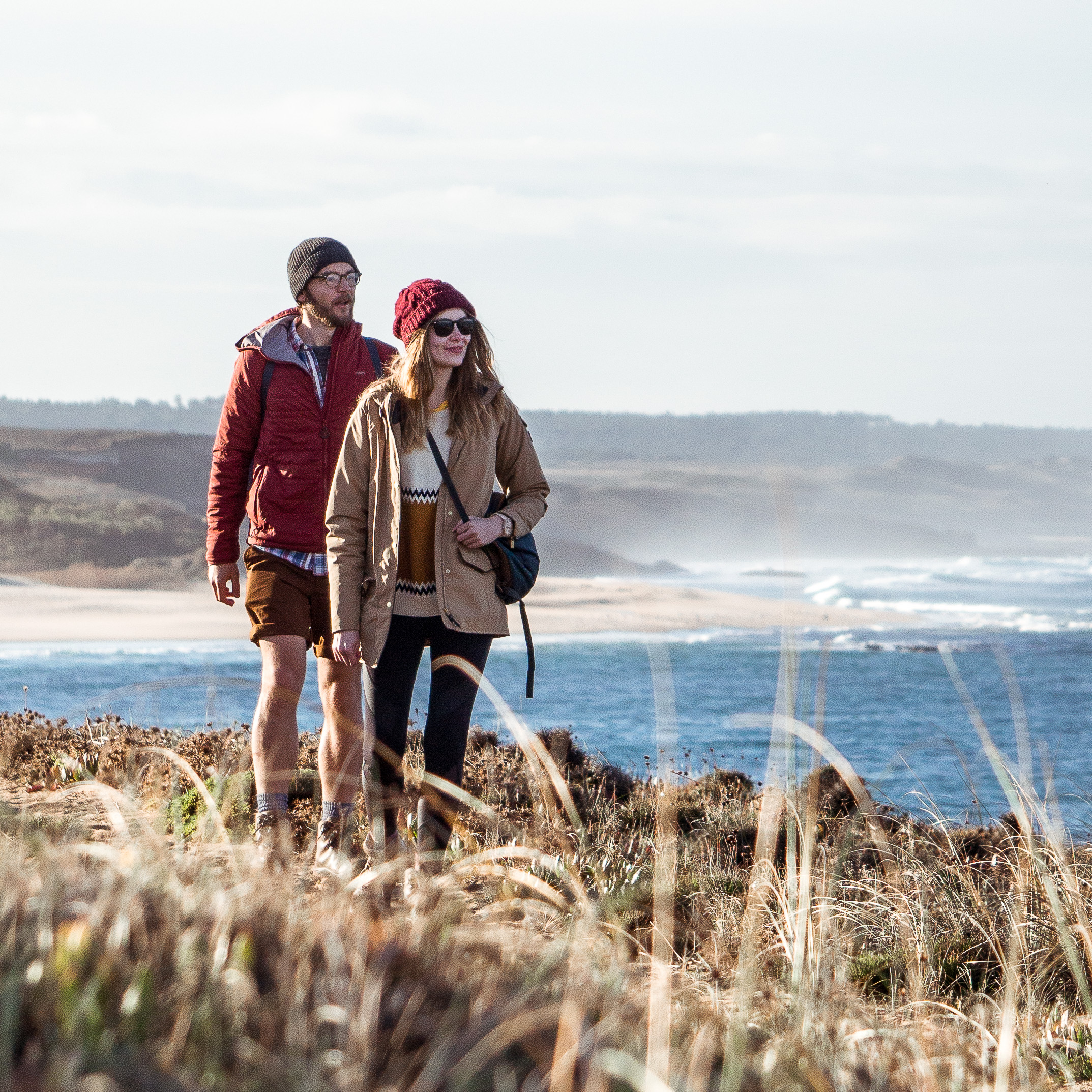
Another ‘wow!’ What you two have experienced and shared with us along the Via Francigena is amazing! Thank you for taking the time to photo, post and blog – I feel like I have been there (minus the blisters!) Lxx
No blisters since France Lynne! We’ve hardened to this walking life. Thanks for your support and words along the way
Luke and Nel,
Wow, you are in Italy. Well done!!!! Brilliant photo’s…….. beautiful.
Keep it up, you are not too far from your destiny.
Good to hear from you.
Love,
Corry and Chris xx
We’re getting there! Thank you for reading and commenting! Good to hear from you!!
You have surpassed yourselves with these photos – stunning views of the mountains and some wonderful town shots. They really bring the walk alive to those of us still here in the rather mundane UK . This blog highlights the sheer exhilarating craziness of undertaking this walk. Keep on walking! Keep on taking the photos!
Thanks John! We’ll keep on, don’t you worry. 30 days till Rome now – that’s crazy!
So I have to admit – somehow I totally missed this blog!! but thankfully I have now found it and read it. Absolutely fantastic photography has been posted which portrays yet another place of interest. It really does make one want to go exploring !!!! Maybe I should buy some boots. X
Glad you found it! Thank you very much, Trish!